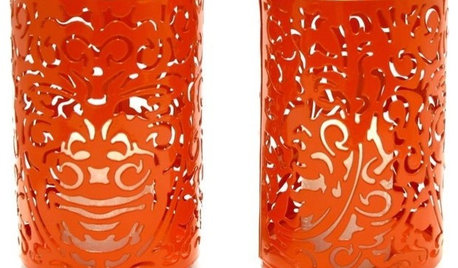Drum Roll Please..............
MissSherry
14 years ago
Related Stories

HOME OFFICESQuiet, Please! How to Cut Noise Pollution at Home
Leaf blowers, trucks or noisy neighbors driving you berserk? These sound-reduction strategies can help you hush things up
Full Story
LIGHTINGGuest Picks: Marching to a Different Drum Shade
Follow a designer as she hunts down the perfect light for her client
Full Story
LIGHTINGToday's Icons: The Oly Studio Meri Drum Chandelier
Unique fixture is at once a glamorous chandelier and a contemporary pendant light
Full Story
FLOORSChecks, Please! 13 Choices for Checkered Floors
Checkerboard Patterns Go From Casual to Ritzy, From Marble to Grass
Full Story
BEFORE AND AFTERSMore Room, Please: 5 Spectacularly Converted Garages
Design — and the desire for more space — turns humble garages into gracious living rooms
Full Story
BATHROOM DESIGNUpload of the Day: A Mini Fridge in the Master Bathroom? Yes, Please!
Talk about convenience. Better yet, get it yourself after being inspired by this Texas bath
Full Story
SUMMER GARDENINGHouzz Call: Please Show Us Your Summer Garden!
Share pictures of your home and yard this summer — we’d love to feature them in an upcoming story
Full Story
OUTDOOR KITCHENSHouzz Call: Please Show Us Your Grill Setup
Gas or charcoal? Front and center or out of the way? We want to see how you barbecue at home
Full Story
PRODUCT PICKSGuest Picks: Eye-Pleasing Candles and Candleholders
Darkness is falling earlier at night, thanks to daylight saving time's end. Stave off the gloom with comforting, flattering candlelight
Full Story
HOUZZ TOURSHouzz Tour: Rolling With the Seasons in a New York Beach House
With plush sheepskins for winter and an airy vibe for summer, this Long Island home appeals all year round
Full StoryMore Discussions




jrcagle
susanlynne48
Related Discussions
And now (drum roll, please), the object of your curositi
Q
Drum roll. Please!
Q
how can i be sooo excited about paint? please share my joy!
Q
Drum Roll Please June Block Lotto Winner IS?
Q
butterflymomok
MissSherryOriginal Author
ericwi
lillydulac
lillydulac
bananasinohio
bernergrrl
MissSherryOriginal Author
MissSherryOriginal Author
jrcagle
MissSherryOriginal Author
lindacatherine
MissSherryOriginal Author
Butterflyer1966
MissSherryOriginal Author
MissSherryOriginal Author
butterflyenthusiast
MissSherryOriginal Author
MissSherryOriginal Author
butterflymomok
MissSherryOriginal Author
MissSherryOriginal Author
MissSherryOriginal Author